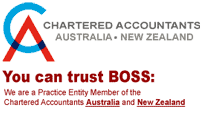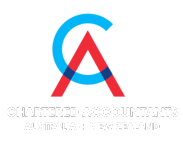Managing cash flow poses a common challenge for accounting firms. However, implementing several straightforward adjustments can enhance your ability to manage cash flow effectively, ensuring that your operations run without a hitch.
To boost cash flow, it is essential to modify the timing of income entering the business while distributing expenses evenly throughout the month. Various strategies can aid in accomplishing this goal. A highly effective approach involves adopting a value-based pricing model alongside upfront payment options. For an in-depth exploration of value-based pricing, refer to our article on How Value-Based Pricing Works For You.
Upfront Billing
Upfront billing is closely linked to value-based billing. It serves as one of the most reliable methods for enhancing your cash flow, as you collect all or a significant portion of the payment before commencing work. While value-based billing pairs effectively with an upfront payment strategy, those who utilise hourly billing can still adopt upfront payments by requesting a percentage of the estimated project time at the outset and collecting the balance upon completion. To promote upfront payments effectively, consider these strategies:
– Provide clients with options for credit card payments
– Offer incentives for full payment in advance, such as a 5% discount
– Allow for partial upfront payments or set milestone payments throughout the project’s duration.
See: https://boz.com.au/value-based-pricing-works-part-1/
How Your Training Affects Your Cash Flow Negatively
Many accountants are educated to charge by the hour; as we have previously highlighted in our article on how value-based pricing can benefit you, this approach may negatively affect your cash flow. For instance, when a task takes longer than anticipated, and you have to invoice your client for extra time, it often leads to pushback from the client concerning the fee. This negotiation process can be time-consuming and ultimately harm your cash flow.
Moreover, your training might also be impacting your cash flow in an additional way. Consider this: when do you settle your bills? If your answer is that “we pay when we do our check run”, then this could pose a challenge for your finances too. The crux of the matter lies in timing. It’s crucial to settle all invoices on their due dates once they receive approval instead of paying them all at once. Doing so will help reduce the speed at which funds exit your account—your cash outflow—and consequently enhance your overall cash flow situation.
A further element of conventional billing practices that might be hindering your cash flow is the duration given for payment if you haven’t transitioned to an upfront payment model. Allowing clients 60 or 90 days to settle their invoices might appear to foster client satisfaction, but it will likely lead to cash flow issues and doesn’t provide significant value for your clients either. Think about shortening your payment terms to 14 days or even as little as 7 days.
Alternative Methods to Enhance Cash Flow without Significantly Altering Your Billing Methods
Impose Interest on Late Payments
Apply a modest 1% monthly interest fee on amounts owed after the deadline. This approach has proven effective for various companies in previous experiences.
Factoring
Factoring is a method of securing your cash flow by selling the invoices of your clients to ‘factors’ or businesses that buy invoices of customers that have good creditworthiness. The factors will advance most of the invoice amount to you (typically 70% or 90%) then when the client pays the factor, they remit the balance to you, withholding their factoring fee. This works out great if you have a couple of large invoices that are choking up your cash flow, because you will have most of the money within a day or a couple of days, and the factoring fee will not eat away at the principal amount of the invoice. If however, you have multiple small invoices, factoring them is probably not in your best interest as a way to create cash flow, because the factoring fee may become costly.

Fee Funding
Fee funders operate similarly to factors by providing upfront payment for the value of an invoice. The key difference lies in the repayment process initiated by the client. With fee funding, clients have the flexibility to repay over a specified term, allowing those with substantial invoices to pay back in installments while you receive full payment immediately from the fee funder.
Take QuickFee as an illustrative example; they focus on fee funding specifically for accounting and legal firms. Initially, firms incur joining costs to utilise their services but do not face further fees thereafter for accessing this service. Once onboarded, you can present their offerings to chosen clients and establish a repayment plan tailored to meet your client’s requirements—such as making monthly payments over a period of six months. Upon obtaining approval, QuickFee will deposit the entire invoice sum into your account and subsequently deduct the agreed installment directly from your client’s designated bank account until complete payment is achieved. This approach provides a cash flow remedy beneficial for both you and your client.
Issues related to cash flow can have significant repercussions; such problems can stifle growth and curtail revenue prospects. Additionally, resources are squandered pursuing overdue payments which contributes stress within operations. For many businesses, persistent cash flow difficulties can ultimately lead to failure. If improvements could be made regarding your cash flow situation, take proactive steps now!
BOSS Fixed-Fees
BOSS offers Australian accounting firms the opportunity to have all of their jobs done on a fixed fee arrangement. All the work is agreed upon before work is done so you know exactly how much each job is going to cost. This takes away all budget overrun issues and there’s no write-offs. It gives accounting firms a safe and relaxed option for all of their outsourced jobs.




